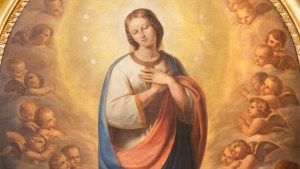What on earth or in Middle-earth does Bilbo Baggins have to do with the penitential season of Lent? What does a diminutive creature in a fairytale, a work of fantasy literature, have to do with the nitty-gritty business of penance, or with fasting and prayer?
The answer is to be found in Tolkien’s insistence that fairy stories hold up a mirror to man. They show us ourselves.
As with those fictional stories that Christ tells us in the Gospel, The Hobbit is a parable that teaches priceless lessons about the spiritual life. Specifically, the whole story can be seen as a meditation on the text of St. Matthew’s Gospel:
Lay not up to yourselves treasures on earth: where the rust, and moth consume, and where thieves break through and steal. But lay up to yourselves treasures in heaven: where neither the rust nor moth doth consume, and where thieves do not break through, nor steal. For where thy treasure is, there is thy heart also.
At the beginning of The Hobbit we are told that a hobbit hole means comfort. Bilbo Baggins is a creature of comfort addicted to the creature comforts. He refuses to leave his home, his comfort zone, because he is possessed by his possessions. This is why Gandalf, the wise and wizened wizard, persuades Bilbo to go on an adventure with the dwarfs. The hobbit needs to learn what G. K. Chesterton teaches, that an adventure is an inconvenience rightly considered. It is in embracing inconvenience, discomfort, suffering, that Bilbo grows in wisdom and virtue. He learns to be detached from his worldly possessions and to lay down his life for his friends. He learns to lay up to himself treasures in heaven. He learns to love.
He learns that laying up treasures on earth is the “dragon sickness,” the possessiveness which possesses the soul. He learns that it is not only dragons that are afflicted by the dragon sickness but that such possessiveness can afflict hobbits and dwarfs – and men.
When Bilbo Baggins returns home at the end of the story, he discovers that his neighbors are selling his possessions because they think that he is dead. In truth, he was dead before he left on his adventure. Or at least he was not fully alive. It is in the adventure, the pilgrimage, that he learns to die to himself by laying down his life for others. He has died and has risen again. It is a new Bilbo who returns home. He is a resurrected hobbit because he has died to himself and risen from the dead. Is Bilbo’s adventure any different from the adventure of Lent itself?


